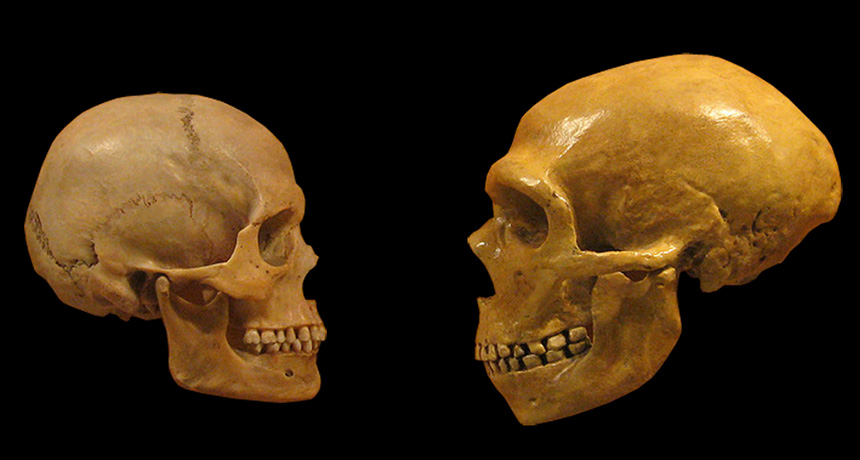How humans (maybe) domesticated themselves
Tameness may have been selected for in our own species, researchers suspect

TO BE OR NOT TO BE TAME In the last 200,000 years, humans may have weeded out members of the species that displayed more aggressive traits. Researchers point to differences between human (left) and Neandertal skulls that indicate tameness.
Cleveland Museum of Natural History/Wikimedia Commons (CC BY-SA 2.0)
Long before humans domesticated other animals, we may have domesticated ourselves.